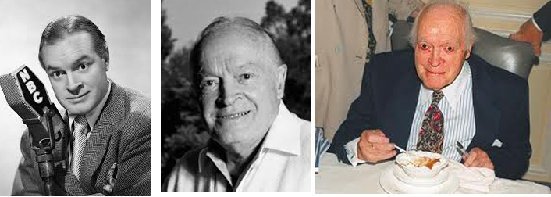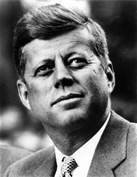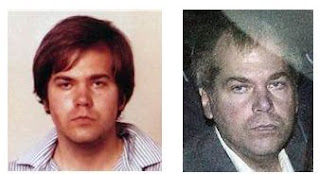Good scattered clouds 57º morning.
Yesterday, again, we started of with a clear blue sky. We warmed up fast and topped at 102º!
The predictions for the next few days....
Picture of the Day ... an apple imitates a face?
Interesting about molasses.....
During the sugar-making process, juice extracted from sugarcane or sugar beets is boiled down until the sugars crystallize and precipitate out. Molasses is the dark, sweet, syrupy by-product made during the extraction of sugars from sugarcane and sugar beets and after crystallization. Typically, sugar cane juice undergoes three cycles of boiling and crystallization to extract as much sugar as possible. With each successive cycle, the leftover molasses contains less sugar. Molasses can vary in color, sweetness, and nutritional content depending on the variety or how much sugar has been extracted.
The word molasses comes from the Portuguese melaço. Cognates include Ancient Greek μέλι (méli) (honey), Latin mel, Spanish melaza (molasses), Romanian "miere" or "melasă" and French miel (honey).
Molasses is composed of 22% water, 75% carbohydrates, and no protein or fat (table). In a 100 gram reference amount, molasses is a rich source (20% or more of the Daily Value, DV) of vitamin B6 and several dietary minerals, including manganese, magnesium, iron, potassium, and calcium (table).
The sugars in molasses are sucrose (29% of total carbohydrates), glucose (12%) and fructose (13%) (data from USDA nutrition table).
Molasses can be used:
- As the principal ingredient in the distillation of rum
- In dark rye breads or other whole grain breads
- In some cookies and pies
- In gingerbread (particularly in the Americas)
- In barbecue sauces
- In beer styles such as stouts and porters
- To stabilize emulsification of home-made vinaigrette
- To reconstitute brown sugar by combining it with white sugar
- As a humectant ( a substance that promotes retention of moisture) in jerky processing
- As a source for yeast production
One bite is all it will take to realize we've got the best Sloppy Joe recipe around. We got rid of the same old Joe taste and instead used a savory barbecue sauce, mixing in crumbled bacon, for an extra bold flavor. Because our Bacon-Barbecue Joe's are a make-ahead meal, you can easily serve them up in place of the same ol' burgers at your next backyard summer bash!
- 5 slices bacon
- 1 pound ground beef
- 1 small onion, chopped
- 1 cup barbecue sauce
- 1/2 teaspoon salt
- 1/2 teaspoon black pepper
- 4 hamburger buns, toasted
- In a large skillet over medium-high heat, cook bacon until crisp; remove to a paper towel-lined plate. Let cool, then crumble.
- In the same skillet over medium heat, brown ground beef and onion 6 to 8 minutes or until no pink remains, breaking up clumps as it cooks; drain off any excess fat. Add crumbled bacon, barbecue sauce, salt, and pepper and cook 5 minutes, or until heated through.
- Spoon over toasted buns and serve.
Historically this date....
1886 – The Pharmacist John Pemberton places his first advertisement for Coca-Cola, the ad appearing in The Atlanta Journal.
1942 – Bing Crosby, the Ken Darby Singers and the John Scott Trotter Orchestra record Irving Berlin's "White Christmas", the best-selling Christmas single in history.
1953 – Edmund Hillary and Sherpa Tenzing Norgay become the first people to reach the summit of Mount Everest, on Tenzing Norgay's (adopted) 39th birthday.
Just think, if Hillary Clintoon had married Edmund .... what her name would be! LOL.
1988 – The U.S. President Ronald Reagan begins his first visit to the Soviet Union when he arrives in Moscow for a superpower summit with the Soviet leader Mikhail Gorbachev.
2001 – The U.S. Supreme Court rules that the disabled golfer Casey Martin can use a cart to ride in tournaments.
2004 – The National World War II Memorial is dedicated in Washington, D.C.
And births this date include...
Click on his name.... interesting read.
My mother (her parents both immigrated from Scotland) was born at her aunt's house in Cleveland Ohio in 1905.The Hopes immigrated from London and moved next door to my mom's aunt in 1908. Her aunt's kids all played with the Hope kids. And another thing, Bob Hope's name was Leslie and my mom married a Leslie (Laney)!
1917 – John F. Kennedy, American politician, 35th President of the United States (d. 1963)
1955 – John Hinckley, Jr., American attempted assassin of Ronald Reagan
All I know. Nuff said. Happy TGIF. Ciao.
xo Sue Mom Bobo
National Paperclip Day on May 29th each year celebrates a small but unusually useful invention. Yes, even the paperclip has its own day of honor. The day celebrates the well-known piece of curved wire that keeps our papers together and helps us stay organized.
While many may have claimed earlier invention of the paperclip, according to the Early Office Museum, Samuel B. Fay received the first patent for a “bent wire paper clip” in the United States in 1867. The original intention of Fay’s clip was to attach tickets to fabric. However, U.S. patent 64,088 recognized that it could also be used to attach papers together.
As many as 50 others received patents for similar designs prior to 1899. One other notable name receiving a patent for his paperclip design in the United States was Erlman J. Wright in 1877. At that time, he advertised his clip for use in fastening newspapers.
The Gem paperclip, which was most likely in production in Britain in the early 1870s by The Gem Manufacturing Company, was never patented. It is the most common type of wire paper clip and is still in use today. It was introduced to the United States around 1892 and in 1904, Cushman & Denison registered a trademark for the “Gem” name in connection with paper clips. Paperclips are still sometimes called Gem clips.
Today, paperclips come in various sizes, shapes, and colors and can make your paperwork look more fun and lively.
Paperclips are not just for holding papers together. There are many other things that you can do with them!
- Replace a zipper tab
- Unclog a spray bottle
- Unclog a single-serve coffee maker
- Hem holder
- Emergency hooks for broken necklaces
The Paper Clip Project
During World War II this small, universal office supply provided a visual method of protest at a time when any outward signs of objection could be dangerous, even in familiar company.
Early in the war, Norwegians were particularly persistent in their development of symbols. The paper clip represented “sticking together” for a time until the Nazis caught on and banned the wearing of paper clips.
According to a March 5, 1941, Provo, Utah newspaper article (The Daily Herald), the Norwegians switched to new symbols as quickly as the bans could be issued.
In 1998, a group of middle school students led by language arts teacher Sandra Roberts and associate principal David Smith began a project through a Holocaust education class. The voluntary after-school class, Whitwell Middle School principal Linda Hooper’s idea, would be the foundation for developing tolerance and diversity.
Inspired by the story of the protesting Norwegians and their paper clips, the students began to collect six million paper clips – one paper clip representing one Jew who perished during the Holocaust. Adults today still wrestle with how the Holocaust could even happen. Imagine middle-school students trying to understand the magnitude of such an event on humanity.
Inspired by the story of the protesting Norwegians and their paper clips, the students began to collect six million paper clips – one paper clip representing one Jew who perished during the Holocaust. Adults today still wrestle with how the Holocaust could even happen. Imagine middle-school students trying to understand the magnitude of such an event on humanity.
The Paper Clip Project gained international attention and by 2001 the students collected more than 30 million paper clips. The school dedicated a Children’s Holocaust Memorial which displays an authentic German rail car filled with a portion of the paper clips.












2 comments:
Good. Good morning.
Your paper clip post may save me $30 today! Thanks!
Ok, Lydia, what are you going to save $30 on??? xo
Post a Comment